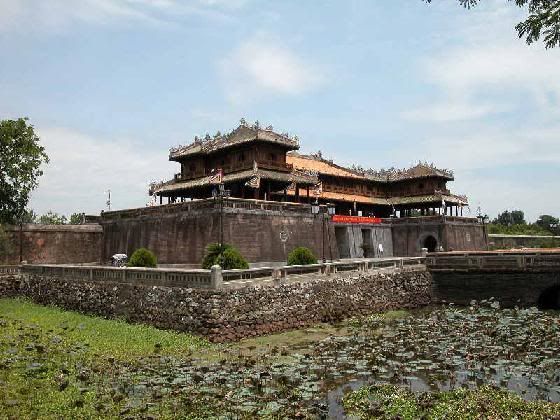
Welcome
This blog is created for the purpose of an in-depth study on Vietnam for the subject: Tourism, Culture and Society
Temasek Polytechinic 2010
Temasek Polytechinic 2010
Monthly archive
Credits
Other sources
Books used:
Vietnam on the move by Lady Borton
Vietnam Today: A Guide to a Nation at a Crossroads by Mark A. Ashwill
National Geographic Traveller: Vietnam by James Sullivan
Vietnam on the move by Lady Borton
Vietnam Today: A Guide to a Nation at a Crossroads by Mark A. Ashwill
National Geographic Traveller: Vietnam by James Sullivan
Tuesday, December 7, 2010
, 10:27 PM
⇨What is Vietnam known for?
The first thing that that comes to mind when we talk about Vietnamese women are definitely the signature conical hats. The short clip below shoes how integrated this humble hat is in the lives of the Vietnamese.
Legend has it that a long time ago,a giant women wore four, huge round leaves stitched together by bamboo sticks in order to get shelter from the rain. The leaves protected mankind, then still naked, from the heavy rain. The women, who was a giant messenger from the sky, twirled the leaves on her head to dispel clouds and rains. Soon, many mankind followed her example and went into the forests to fetch broad and round leaves(palms) which they stitched together on a bamboo frame. And thus, this indispensable headwear was created.
There is an old Chinese saying: "民以食为天"which means that cuisine is the most important thing in people's lives. For the Vietnamese, this saying is incredibly true. Plain rice( com trang) is at the center of the Vietnamese diet. Rice is also used to make noodles in the famous Beef Noodle Soup( Pho Bo). This home-cooked meal is often eaten for breakfast but can be consumed any time of the day. It is usually purchased from street vendors in the form of a tasty beef broth.
Being termed as the "rising dragon of Asia" sometime back, Vietnam is famous for certain landmarks such as the Hue- the ancient royal and the town of Hoi An. Hue is recognised by the UNESCO as a cultural heritage site and is home to the famous Forbidden Purple City. Hue was the imperial City of Vietnam in 1945. Many relics of the former glorious days have survived both the French war and the Vietnam war. Below is a picture of the purple city:


Hoi An, being the old Southeast Asia's trading port, is renowned for its merchant houses, riverfront streets and Chinese assembly halls. It was ranked as the best preserved post of a bygone era, prompting UNESCO to list the site in its World Heritage List. About80% of the residential structures of the town still remain intact, Infact, the roads, lanes, bridges still exist till today.
Last but not least, the story behind the boat people of Vietnam.


After the fall of Saigon in 1975, an exodus of more than 1 million refugees took to the seas in tiny, overcrowded boats. These people then came to be known as the "boat people". When Saigon fell due to the defeat of the US military, many Vietnamese tried to escape the clutches of the reigning communists. These people faced typhoons, hunger and attack by Thai pirates while in the open sea. Now, these families who live on permanently on floating houses, earn their livelihood by selling handicrafts and products fished from the sea(shells, star fish etc) to tourists who visit Ha Long Bay. They also earn from operating boat rides.
Labels: Known for